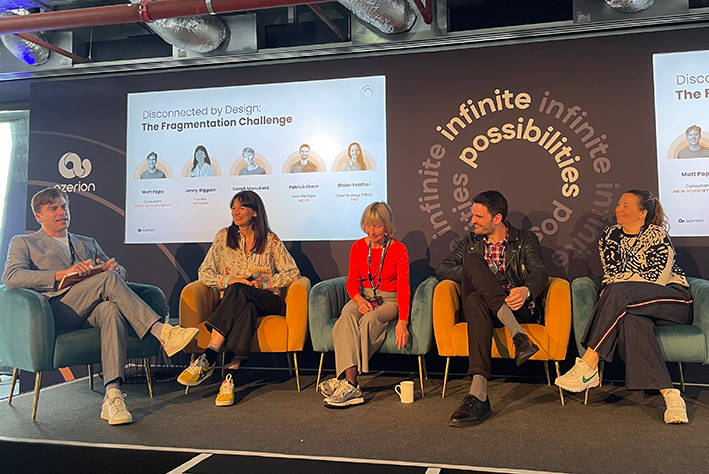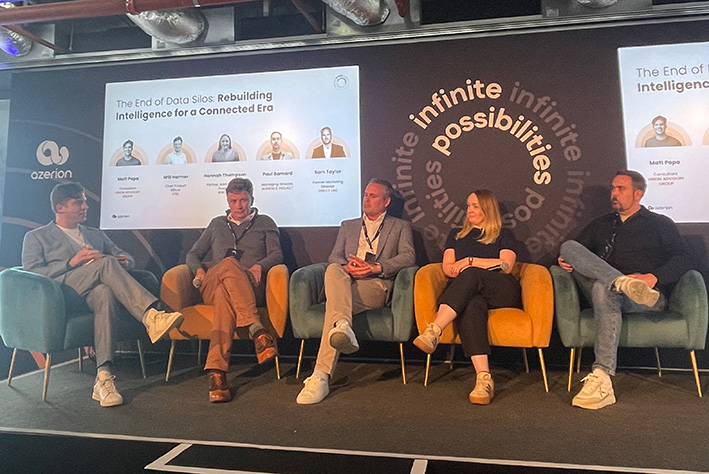‘Too much data’: Industry reflects on fragmentation challenge

In an age of media fragmentation, buying complexity and wasted impressions are real threats to agencies and advertisers, and solving this challenge involves better understanding of data from all stakeholders and clear measurement frameworks.
Those were some of the key takeaways at last week’s Azerion UK event featuring leaders from across adland. As Dean Nagib, Azerion UK’s commercial director, said: “If we don’t meet customers where they are, we will lose them.”
For Jenny Biggam, founder of the7stars, fragmentation is a good thing because “the age of abundance” actually means “the audience is fragmented but opportunity to reach people has never been greater”.
“The onus is on advertisers to create more creative across different places people are consuming media,” she continued.
This was echoed by former Unilever vice-president of global media Sarah Mansfield, who pointed out that creative is 80% of an ad’s overall impact. So the approach should be “what creative is really going to resonate with my audiences, then using the media signals and optimising against that”, she explained.
That said, there are also other kinds of fragmentation the industry needs to tackle, not just the proliferation of channels.
Rhian Feather, chief planning officer at OMD UK, highlighted the fragmentation that can occur within media agencies, with the investment, programmatic and strategy teams all working separately.
Meanwhile, Patrick Hann, ad tech manager at IAB UK, noted: “There are so many ways of measuring, different KPIs, different platforms… it’s not ideal to be in that environment.”
Too much data
All agreed that the answer, though, is not about finding the latest, shiniest ad format to attract audiences.
Feather suggested that UK consumers are more “discerning” than others and some formats have the potential to “madly bomb” in this market.
Another big challenge is around the use of data.
During another panel at the event, Hannah Thompson, partner of addressable strategy and product at Kinesso UK and Ireland, believes much of this comes down to skillset.
“It’s the importance of being able to know what data not to use – we have too much data and not all of it is great,” she admitted.
Thompson used the example of TV and OOH — two channels that traditionally provide less “data” than others. “The people planning on those really look at the data that they do have and look to do things creatively,” she said.
“We need to use less data,” Thompson concluded, suggesting that this is a skillset the whole industry must work on.
Will Harmer, chief product officer at Utiq, has one piece of advice: “Put yourself in the shoe of your customer to consider your data strategy.”

Optimising to a number
Participants at the event agreed that getting the right insights from data remains difficult.
Noting the pressure marketers are under to justify every pound, Mansfield pointed to the frustration of tracking studies that take six to 12 months. She recommended: “Duplicated frequency is key — follow consumers in a privacy-safe way, also in walled gardens and not just the open web, then track that back to outcomes.”
While Hann suggested that “IDs are part of the structure and AI is the enhancer”, Feather caveated that with the lack of trust in AI due to the continuing issue of hallucinations.
Biggam said it shouldn’t be an “either/or” discussion. “It’s about building on consumer insight,” she said. “Otherwise you run into the danger of optimising to a number, when we need to be optimising to a human.”
Consumers seeking comfort online more likely to view advertising positively
Single source of truth
Paul Barnard, UK managing director at AudienceProject, was frank about the measurement challenges associated with all of this.
Pointing to data from walled gardens, clean room integrations as well as reach and frequency figures from a joint industry currency like Barb, he said: “We need a single source of truth — otherwise you’re looking at different data sources telling you different information and that is hard to understand.”
While noting the potential breakthrough of cross-media measurement project Origin, Sam Taylor, former marketing director at Direct Line Group, suggested that, for now, marketers must consider carefully what they are trying to do.
For example, whether they are focusing on short-term or long-term return on investment, as well as the existing silos of above-the-line versus below-the-line investment.
He said: “We have to be responsible and ask ourselves: where should we show up?”




